John Hurrell – 27 October, 2013
What's intriguing is the fact that all the paint has been applied to the floor and lower walls, and that the sewn unpainted works - with subtle barely perceptible compositions - are both on the wall and freestanding. All three components are essential for the whole entity, for without the stretchers, the floor work lacks vertical drama, and without the strident floor, the canvases would be too subtle. Collectively they help each other, marching arm in arm towards perfect resolution.
In this new Andrew Barber show there are three sorts of ‘painting’ that collectively merge with the Hopkinson Mossman architecture to form a ‘walkaround’ installation. There are the ripple ‘sea’ patterns on the floor in matt cream and glossy dark blue. That’s one work. There is the flagshaped formation on the wall of Gallery One, where 26 stitched unpainted canvases are displayed, each one titled after a letter in the alphabet. And there is the very large cotton stretcher jammed between floor and ceiling in Gallery Two, made of stitched together diagonal strips - with two alternating, ‘vectorial’ grains that catch the light differently and affect the tone and texture of the fabric.
The floor work, The Sea (Putiki St), with its undulating thick lines, works best where Barber has sprayed dark blue bursts on the very low portions of the adjacent walls: smudgy flurries and tentative smoky squirts around the section where normally a kick board or skirting would go - particularly where the edge is parallel with a rippling band, or where the end of each line meets the wall. The ground concrete underneath the floor’s shiny paint makes it seem to swirl like water - but it could be a flag too.
On the wall of Gallery One, Barber’s flag-shaped formation, displaying 26 paintings, has each work presented with very simple compositions (the stitching hidden inside straight creases) so you can see how its pale brown raw cotton surface is divided. Each square stretcher is like an uncoloured flag - for ‘countries’ like Oscar, Papa, Quebec, Romeo, Sierra and Tango - and the whole configuration as positioned on the wall is like a giant flag on a pole.
These ‘flags’ are 400 x 400 mm, but next door in Gallery Two, one of them (Yankee) is blown up so it is 3200 x 3200 mm. These whopper paintings are a project Barber has a long history with, paintings that double as walls, and where the backs (with their exposed parallel seams) are intended to be just as interesting as the fronts.
What’s intriguing is the fact that all the paint has been applied to the floor and lower walls, and that the sewn unpainted works - with subtle barely perceptible compositions - are both on the wall and freestanding. All three components are essential for the whole entity, for without the stretchers, the floor work lacks vertical drama, and without the strident floor, the canvases would be too subtle. Collectively they help each other, marching arm in arm towards perfect resolution.
John Hurrell
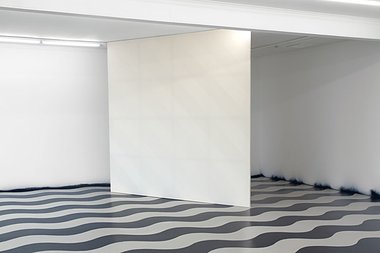
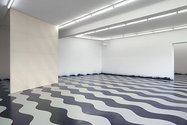
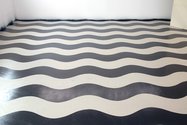
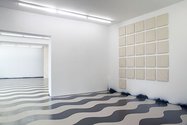
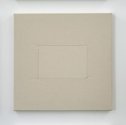

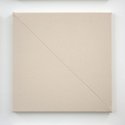
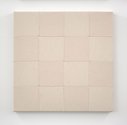

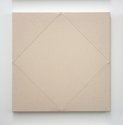
 Two Rooms presents a program of residencies and projects
Two Rooms presents a program of residencies and projects Advertising in this column
Advertising in this column



This Discussion has 0 comments.
Comment
Participate
Register to Participate.
Sign in
Sign in to an existing account.